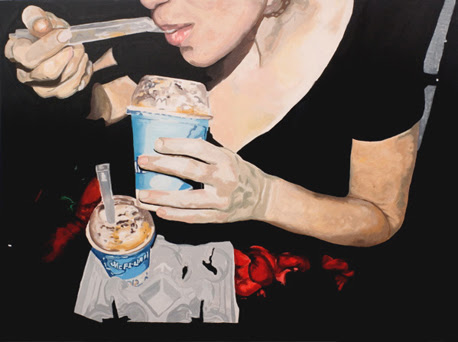You’ve tried.
You’ve tried everything imaginable to stop eating your trigger foods:
· Not eating after dinner
· Switching from ice cream to sorbet
· Eating health-foody cookies instead of junk-foody ones
· Not keeping the stuff in the house
· Diets
· Cleanses
· Affirmations
· Visualizations
Yet you’re still face-planting in the Häagen-Dazs.
What’s up with that?
It’s not God punishing you for some horrible crime in a previous life. You’re not condemned to an eternity snarfing down mini–bear claws.
Nor are you a sniveling, weak-willed fragment of a human who doesn’t deserve to heal.
There’s nothing wrong with you.
But something very powerful is in the way, and your efforts to curb your eating will come to nil until you acknowledge this one thing:
Some part of you doesn’t want to heal.
I know. You feel insulted. But hear me out.
When we try repeatedly to heal a behavior such as compulsive eating and don’t get results, chances are excellent that an unconscious part of us wants to keep things as they are.
This is secondary gain, a psychological term that refers to the hidden benefits we get from holding onto a mental, emotional or physical problem.
Secondary gain knocks us off the wagon just as we’re making progress.
We start losing weight, then find it creeping on again after something deep-down sees that staying fat gets us out of having sex with our partner.
Or we’re resisting that white cheddar popcorn, getting some exercise, making friends with our body again…. Then our sister calls and says, “Oh yeah, I tried that, too. It never worked for me.”
Before we know it, we’re back in the popcorn, for reasons we can’t fathom. Our resolve is lost in the crumbs at the bottom of the bag.
We faintly hear, in our sister’s proclamation of self-defeat, the hidden admonition to step back in line. It’s safer for us to stay loyal to the family dysfunction than to risk the visibility that healing brings, so back in line we go.
I’ll say it once more: There’s nothing wrong with you. Something is in the way.
Sneaky motivations are at work here.
While we consciously long to change and heal, we can derive so much of our identity from being wounded that genuine healing can be more terrifying than physical death. We would rather stay safe inside our perversely satisfying pain than risk a new identity as a transformed person.
Until we resolve the sneaky upside of our crazy eating habits, our unconscious will keep sucking us back into the quicksand of our habitual patterns, convincing us all the while that healing is impossible.
Is secondary gain holding you back?
Grab some writing tools and complete the sentences that follow. Don’t be smart, spiritual or evolved when writing your answers. Write the first things that come to mind without censorship:
How do I benefit from holding on to my neurotic eating patterns?
What part of me is choosing to stay stuck in these patterns?
What would I lose if I were sane with my food?
Take your time. Be as honest as you can.
If you’re having an “aha!” breakthrough, chances are you’ve tuned into your secondary gain.
Once we see our secondary gain …
90 percent of our healing work is done. The other 10 percent is consciously choosing what to do with our discoveries. We can ask questions such as:
How has this pattern served me?
Can I choose to let it go?
What will it take to let it go?
Whatever you discovered about your secondary gain, I guarantee that you’re not as freakish as your worst thinking would have you believe.
Coming out of the dangerous neighborhood known as our own mind and sharing our experience with others who support us is the best way to a healing breakthrough.
If you feel inspired, please post your discoveries, questions, disagreements, and musings. The more fearlessly we share our truth, the easier we make it for others to do the same.
The true upside of compulsive eating is the opportunity it affords us to face our fears and step into the natural brilliance of our true nature.
Are you willing?
Take my hand. Let’s walk through together.
I look forward to hearing from you.
~
Relephant Read:
Four Cures for Compulsive Eating. ~ Isabel Foxen Duke
~
Author: Marcella Friel
Editor: Renee Jahnke
Image: Maria Raquel Cochez-Wiki











Read 9 comments and reply